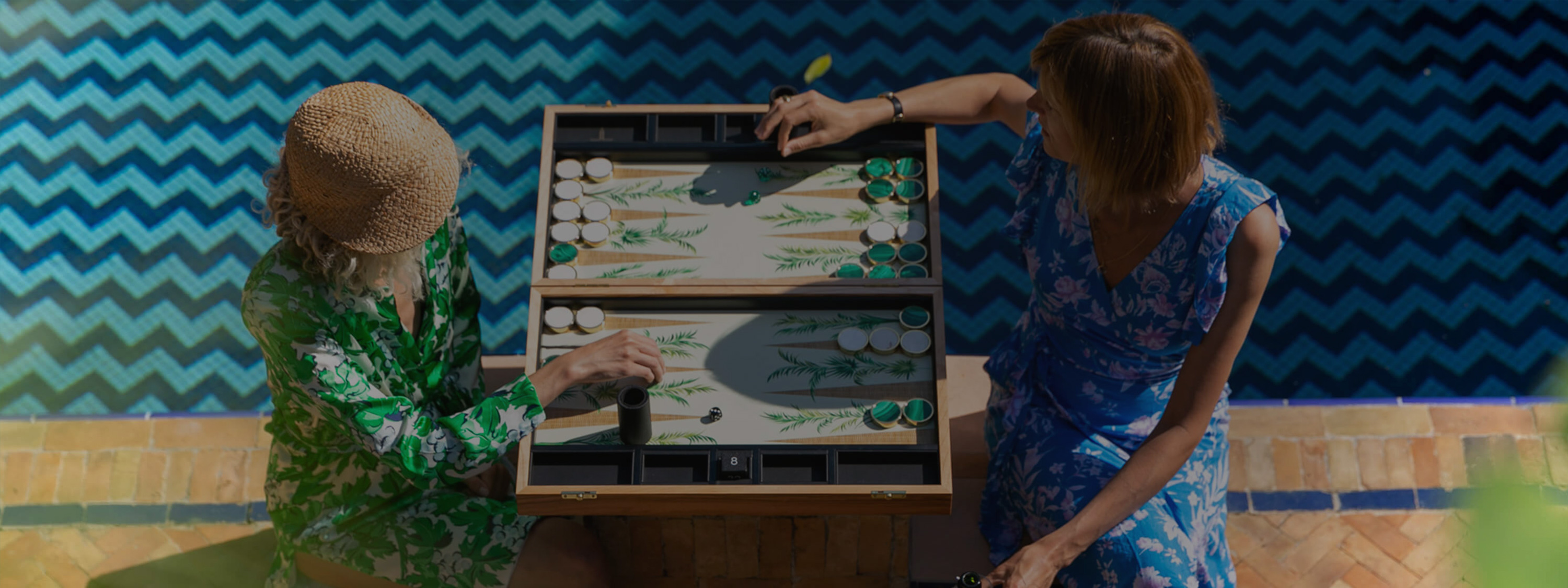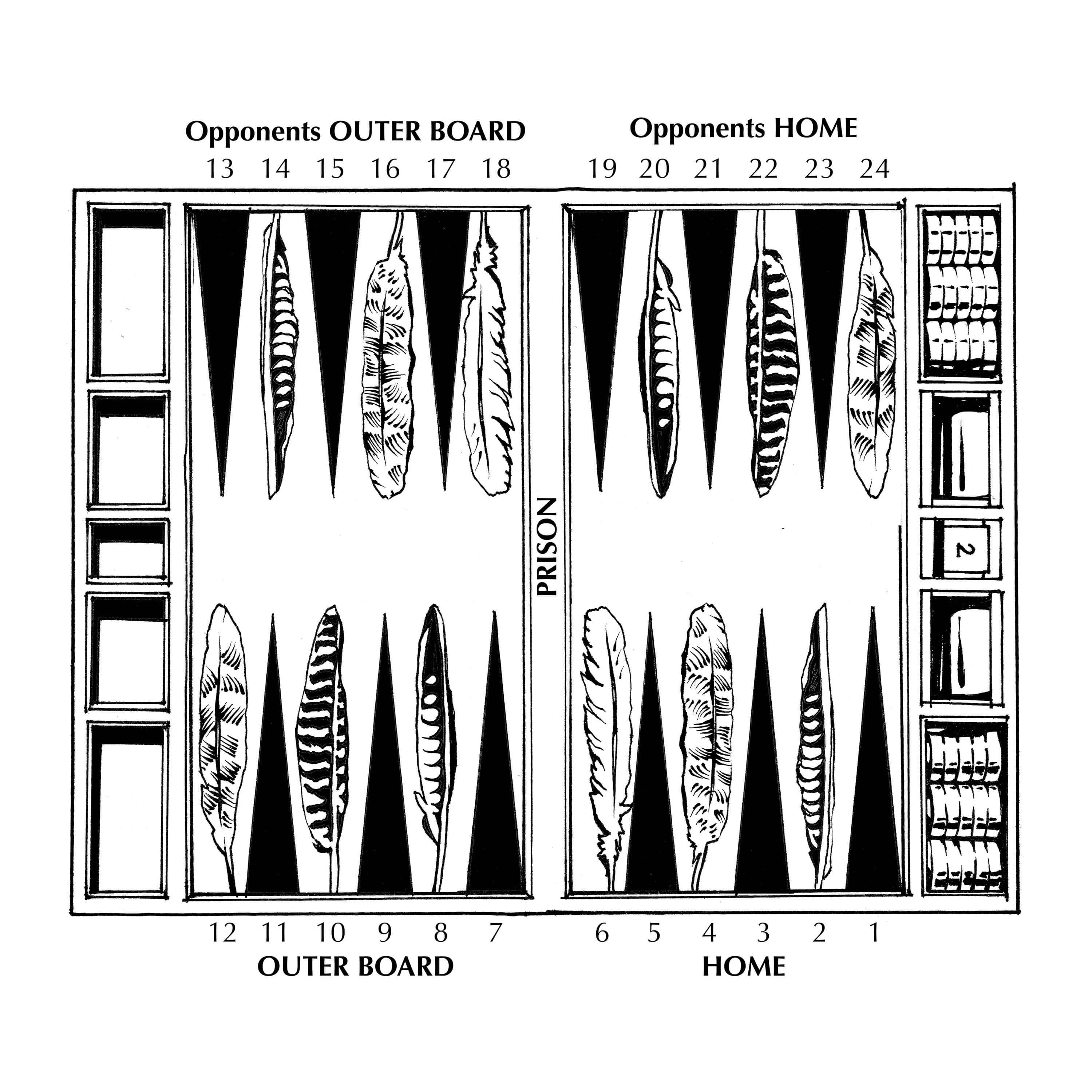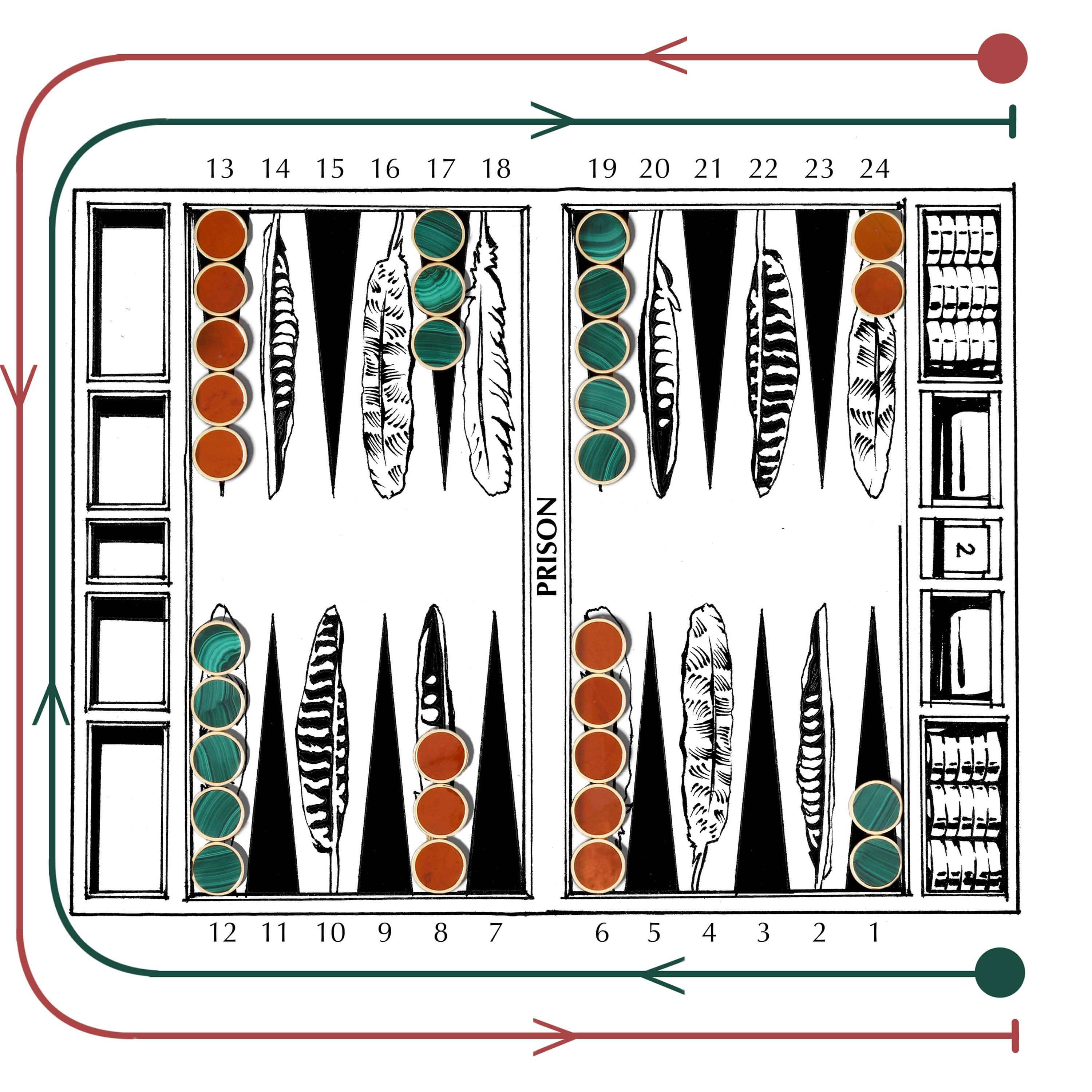How to Play BACKGAMMON
A beginner’s guide with Alexandra Llewellyn

A beginner’s guide with Alexandra Llewellyn
The rules of backgammon are deceptively simple, yet take a lifetime to master. Discover how to play, below, and let the games begin…
Alexandra’s Backgammon boards come ready with everything you need to play:
Optional:
Backgammon is a game for two players, traditionally played on a board consisting of 24 narrow triangles called ‘points’. On my backgammon boards, half of the triangles are replaced with different design elements, from leaves, flowers and butterflies to giraffes and cigars, which stand in for the points and are counted among the 24. Points are grouped into four quadrants, consisting of six each. The quadrants are referred to as a player’s ‘home’ board and ‘outer’ board, and the opponent’s ‘home’ board and ‘outer’ board. The home and outer boards are separated from each other by a central bar on the board called the ‘prison’ bar.
Each player has 15 playing pieces in their own colour, which are arranged on the board at the start of a game as follows: two on each player’s 24 point; five on each player’s 13 point; three on each player’s eight point; and five on each player’s six point. The points are numbered for either player starting on that player’s home board. The outermost point is the 24 point, which is also the opponent’s one point (see picture, above).
The direction of play is in a horseshoe direction from the ‘start’ bar in the opposite quarter (i.e. in your opponent’s ‘home’), ending up in your ‘home’.
To begin, throw one die each. The highest number wins (ties are re-thrown until one player is the winner).
Using both dice, the highest roller moves their pieces around the board in the direction of play. The numbers from the two dice thrown can be used to move either two different playing pieces or one piece in two steps.
A piece can move to any point that has no pieces, any number of your own pieces, or just one of your opponent’s pieces on it (in which case the opponent’s piece is sent to ‘prison’).
A point that has two or more pieces on it is ‘secure’ for the player to whom the pieces belong. Depending on the rules, which you should establish before play, there is either no limit to the number of playing pieces that can reside on a point or a maximum of five pieces.
Direction of play
The direction of play is in a horseshoe direction from the ‘start’ bar in the opposite quarter (i.e. in your opponent’s ‘home’), ending up in your ‘home’.
Start bar
One of the shorter side frames of the board.
Home
One of the quarters of the board, assigned to each player at the start of play, and from where the pieces are ultimately taken off the board. In the ‘home’, points are numbered 1-6, ascending from the ‘start’ bar to the central ‘prison’ bar.
Prison
The central ‘prison’ bar of the board frame. This is significant when pieces need to return to the board from ‘prison’, plus at the latter stage of the game when bearing off.
Bearing off
Once the player’s pieces are all in ‘home’, the player starts to take pieces off the board according to the numbers thrown on the dice.
Secure
A ‘secure’ point is where pieces of the owner-player are safe from being sent to ‘prison’.
At this stage, the player can either move a piece forward (if space allows it, i.e. there would be no room to move a 6) or ‘bear off’. When casting a number higher than any point covered, a piece from the highest point in the ‘home’ may be taken off. (Please note: if, while bearing off, an individual piece is hit, it is sent to ‘prison’ and must re-enter the board in the usual way – in the opponent’s home – and travel in the direction of play, back to its home, before more pieces can be moved forward or taken off.)
It’s an honour to create backgammon boards that bring people together to enjoy time spent in each other’s company.
Designed by Alexandra. Handmade by expert artisans. Brought to life with play. Available in full-size boards or convienient travel-size.
Working with private and corporate clients, Alexandra translates her clients’ worlds and wishes into mesmerising one-of- a-kind objets d’art to enjoy for a lifetime.
There are those who enjoy a game, and there are those who understand that there is magic in play. Since 2010, Alexandra has made an art of it.



